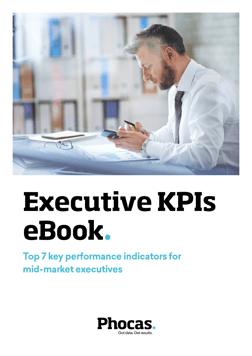5 ways to effectively manage employee performance (through BI)

Managing the performance of employees plays an important role in meeting company goals, keeping people motivated and being able to work with human resources to help or coach employees when they are struggling. Using business intelligence data to measure targets and demonstrate new opportunities is a transparent and effective way to treat all of your people fairly and bring out their best performance.
From the company side, performance management and providing regular feedback is essential to secure the retention of your people and ensuring everyone is on the same page with the corporate strategy.
In the Gallup annual State of the Global Workplace Report in 2023 the findings showed 23% of respondents believing they were engaged with their workplace. The most basic employee engagement element is knowing what is expected of you - bringing the tangible out of the job description. Gallup’s meta-analysis across 112,312 teams and business units finds strong linkages between engagement and many important organizational outcomes, including good performance, employee retention, safety, customer engagement, and employee wellbeing.
An effective performance management process consists of meeting both task and people needs. Task needs are those dealing with structure and practical strategy. People needs relate to the development and motivation of your team.
The structure of effective performance management is said to be continuous. Each step should inform the next, and the last step should again feed into the first, creating a repeatable process. To assist you, we have divided the processes into five steps, each of which has a task component and a people component.
1. Set goals + Recruit right
When setting goals, it is important that they align with your company culture and what your employees can realistically do with their competencies and experience. We suggest you look at past performance of your department, identify points for improvement, and try to quantify the increase in performance you would like to achieve. At Phocas, we are strong believers in using the concept of SMART goals – goals that are specific, measurable, achievable, relevant and time bound. These goals can easily be translated to KPIs and metrics, and are great for effective performance management.
While setting the right goals is extremely important, you also want to ensure you have the right people on your team. Make sure you match employees with relevant tasks and clear expectations. In this regard, we suggest you have a look at their past performance (this is easily done in Phocas), and speak to your employees to discover where their motivation lies – you could be surprised especially now talent is harder to find after the Great Resignation and how performance expectations and strong cultures are essential to employee satisfaction. .
2. Set a structure + Provide support
In order to manage a successful hybrid work environment in which employees feel comfortable, it is important to keep an open dialogue of employee experience and have software that allows for real-time feedback. If necessary, outline a structure of communication where team members first seek advice from others before they come to you and provide the necessary collaboration tools to build these relationships.
When doing this, also ensure there is enough support for everyone on your team to feel comfortable with their roles and ensure they receive enough support and training. Recognize their past experiences and skills and build on this by offering relevant learning resources as well as your own advice and guidance.
3. Communicate your plan + Coach and challenge
Once you have set a structure, it is time to communicate your plan of action. Ensure each employee has a clear idea of what is expected of them and the review process. It will be useful to create development plans with performance goals for all of your people. This in turn makes reviewing progress easier. Carry out one-on-one meetings regularly as this is a proven way to achieve performance improvement. Use data and visualizations to illustrate what you are saying. Business intelligence software allows you to share reports or KPI progress with employees in a manner that can easily be understood by everyone.
Ensure you provide continuous coaching and challenge your employees at this stage. Take their feedback into consideration, listen to any concerns they may have, and provide appropriate support. As a manager, you are responsible for helping your staff build their capability. You should stay attuned to the different learning styles of your staff - do they work better with written or verbal instructions? Do they prefer you to be hands on or hands off? Ensure you tailor your coaching style to the individual.
4. Monitor & evaluate + make joint decisions
Monitor and evaluate how people are performing compared to expected progress. In software like Phocas, you can monitor progress and milestones in real-time, so that you do not have to build a new report each time. Better still, you can combine relevant data from different sources to create a comprehensive view of what is happening across the business or in your specific department. Phocas is cloud-based so you don’t have to sit down with each employee in your office, but can send them alerts about progress and opportunities as well as discuss them in your one-on-one not just in the annual review.
Once you have an idea of how the business, your team and each person individually are meeting business objectives, you can involve them in decision-making processes. This provides a sense of ownership over the targets and can be a great source of motivation. Ask employees if they would like to have any input on the strategy, how they believe they can improve or how targets should be adjusted, and take this into consideration. Not everyone wants to participate in things outside of their job scope but inviting your team to contribute to a whole of team strategy can help you identify future leaders who are motivated by more than just their inputs or their job role.
5. Hold accountable + Empower, engage, listen
When you constantly monitor and evaluate performance as per the previous step, you can hold your team accountable to organizational goals . If certain employees constantly have poor performance , this should indicate you need to take action. Communicate with the employee, show them the data indicating they are underperforming and ask them what they believe they need to help them improve. Perhaps they could benefit from advice or training from employees who are doing well, or perhaps they don’t fully understand the value of a product you are manufacturing or distributing? It is often not just one factor, it can range from the onboarding not being clear if there are common issues across your team, you may need to fix a business process such as better product training for new hires or refresher training for more experienced staff.
Lastly, it is important to empower and engage employees to make the best decisions and listen to their feedback. An excellent way to achieve this is to provide employees with the information they need to make such decisions. By using business intelligence, you are providing your employees with one view of the truth. Phocas allows you and your team to identify trends fast, so you can act on them before problems arise or opportunities disappear.
Using these strategies to manage performance can be incredibly beneficial for both your team and the company as a whole. Chances are you will be seen as a better leader, your team will be more motivated, and the company as a whole will perform better.
Learn more about using business intelligence by downloading your eGuide: KPIs for Executives.

Katrina is a professional writer with experience in business and tech. She explains how data can work for business people without all the tech jargon. She is always on the look out for new ways data is being used by business people to know more and be sustainable.

Platform CO2 emissions down 68% in first year as a B Corp
Phocas leads the charge towards a more equitable and sustainable future during its first year as a B Corp, setting the bar high for tech companies globally.
Read more
Financial statement analysis: what's changing?
Financial statements are scorecards for businesses, allowing the finance team to interpret and analyze financial performance.
Read more
We'll do the data wrangling, you do the analyzing
In today’s business world, we are faced with the constant struggle to bring our data into line. The sheer volume of data that businesses generate can be overwhelming to simply manage, never mind analyze. A survey by Phocas revealed that 60% of businesses identified ‘no expertise in-house,' and 33% said, ‘too much data to unravel' as the main obstacles that prevent them from breaking down data silos.
Read more
How measuring human capital value added can bring a competitive advantage
Change is a constant in business and in the last two years, change has been exponential. People are navigating new channels, new tools, new customer behaviour and new workplaces so it’s reasonable for many business leaders to question some of the metrics being measured.
Read more
Find out how our platform gives you the visibility you need to get more done.
Get your demo today